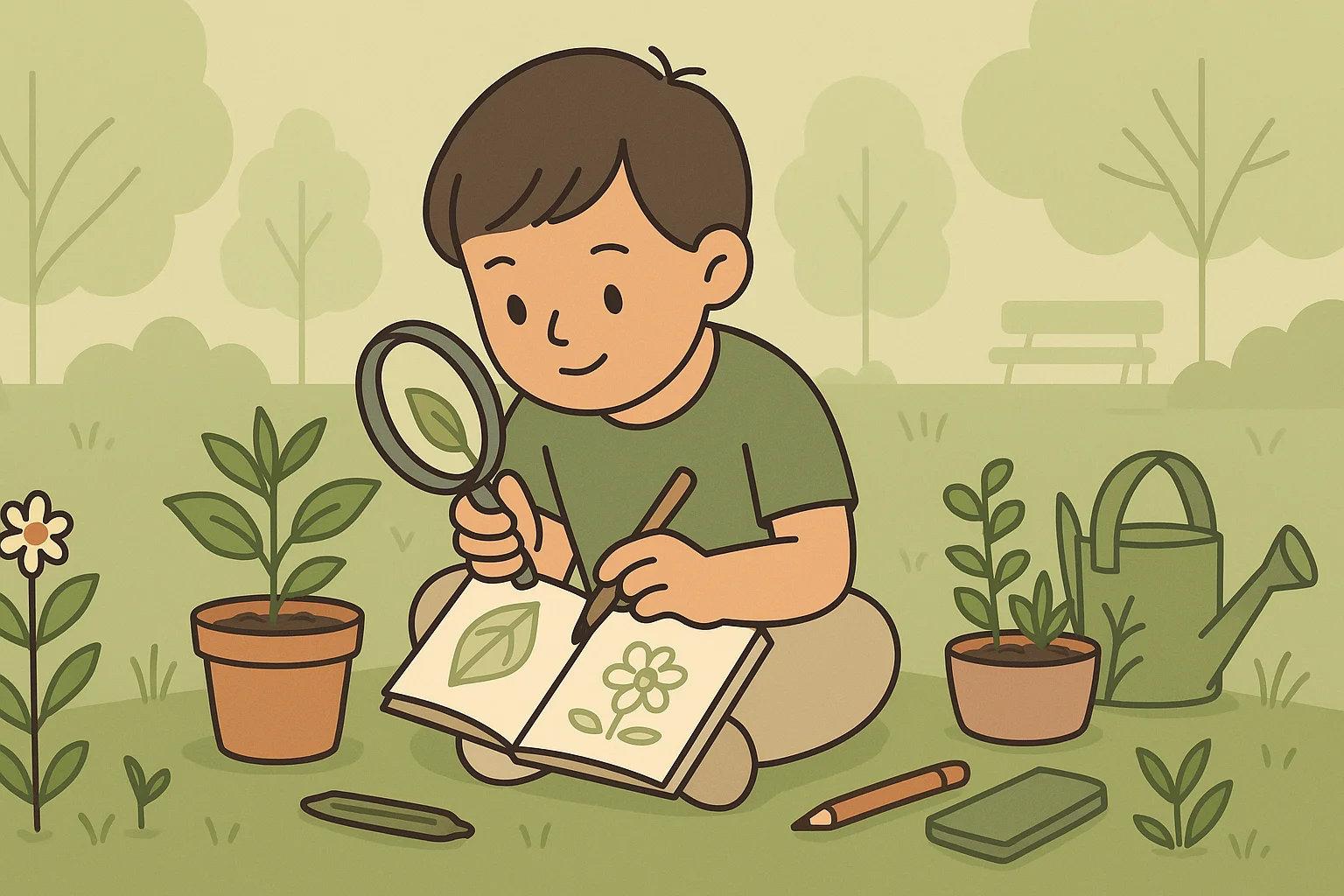Learn More About Your City: Everyday Patience Guide
Cities often feel fast-paced and overwhelming, but beneath the noise lies a wealth of untold stories, cultural layers, and hidden gems. The secret to unlocking them isn’t rushing from landmark to landmark—it’s practicing patience. With curiosity and steady attention to architecture, mapping, or just what type of plant is this, anyone can turn ordinary streets, parks, or markets into classrooms of history and nature.

Explore the Historical Heart of Your City
Every city carries echoes of its past, preserved in architecture, street names, and public monuments. The historical heart—be it a central square, old town, or preserved district—is where these layers are most visible. Exploring with patience allows you to move beyond sightseeing into true understanding.
Walk Where History Happened
Organized walking tours, often led by local historians, reveal surprising anecdotes you’d never notice alone. For example, an old fountain may double as a symbol of past water shortages, while a simple street corner might have witnessed key civic debates. If guided tours aren’t your style, self-guided apps and downloadable maps can help you notice plaques, engravings, and architectural motifs you’d otherwise pass by.
Tip: Dedicate time to just one street or square instead of trying to see an entire district at once. Patience uncovers details—stonework, historic signs, or remnants of old markets—that make history tangible.
Engage With Museums and Archives
Local museums, historical societies, or even city libraries can provide context that ties together what you see outside. Small neighborhood museums often showcase artifacts like old tram tickets, handwritten letters, or personal photographs, grounding history in everyday life.
You might:
Visit exhibitions about the city’s founding or industrial past.
Access digitized archives that let you explore historic newspapers or maps.
Compare old and current city layouts to understand urban growth.
Document and Reflect
Carrying a small journal or digital notebook turns exploration into active learning. Record impressions, sketch interesting facades, or jot down questions to research later. Adding photos alongside notes helps you track discoveries and deepen your connection to the city’s story.
Historical Exploration Toolkit
Tool | How It Helps | Beginner’s Tip |
Walking Tours | Provide guided insights and hidden anecdotes | Choose themed tours (architecture, cuisine, revolutions) for depth |
Local Museums | Offer artifacts and stories tied to the city’s people | Visit smaller museums for niche history |
Archives & Libraries | Connect documents, maps, and records | Use digitized databases for easier research |
Journaling | Strengthens memory and engagement | Note details like architectural motifs, inscriptions, or colors |
By combining walking tours, archival research, and personal documentation, you begin to see the city not just as a backdrop for daily life but as a living text—one that unfolds slowly when approached with patience.
Connect with Everyday Urban Life
A city’s essence is not only preserved in monuments or museums but also in its present-day rhythms—the sounds of street performers, the aroma of markets, and the flow of people in parks and squares. Practicing patience while observing daily life can turn even a short walk into an educational and meaningful experience.
Dive into Public Markets
Markets are living classrooms of culture. Each vendor stall tells a story of tradition, migration, or seasonal change. By walking slowly, asking questions, and sampling local products, you gain more than just food—you gain insights into the city’s culinary identity.
Observe seasonal offerings: They reveal agricultural cycles and local eating habits.
Engage with vendors: Simple conversations often uncover recipes, family histories, or trade secrets.
Take notes or photos: Documenting spices, produce, or handmade goods can inspire further research.
Experience Social Gatherings
Festivals, parades, or concerts reflect a city’s spirit better than any guidebook. Participating as an observer, and not just a passerby, allows you to notice how traditions adapt in modern times:
Noticing the symbolism in costumes or decorations.
Listening for repeated musical motifs or chants.
Observing how different age groups interact and celebrate.
Ride the Pulse of Public Transport
Public transport is more than a way to get from one place to another. It’s a stage where the city’s stories unfold—commuters reading newspapers, children playing, or elders sharing casual conversations. Riding trams, buses, or bikes along common routes provides an authentic glimpse of how residents interact with their environment daily.
Quick tip: Sit by a window, watch the urban landscape unfold, and note architectural shifts from old quarters to modern districts.
Practice Slow Observation in Public Spaces
Patience is a powerful tool in people-watching, a practice often dismissed as idle. Parks, squares, and riversides offer perfect spaces to sit, breathe, and observe urban rhythms.
Pay attention to small details: a child’s chalk drawing on pavement, a musician’s improvised song, or the shifting patterns of light on old buildings.
Journal your impressions—it transforms fleeting moments into learning opportunities.
Use your phone camera sparingly; focus first on presence before documentation.
Everyday Life Exploration
Activity | What to Observe | Benefit |
Public Markets | Seasonal produce, vendor stories | Cultural and culinary insights |
Festivals & Parades | Costumes, music, rituals | Understanding traditions in action |
Public Transport | Behavior, conversations, routes | Real picture of city rhythms |
Parks & Squares | Light, sound, interactions | Mindful connection with the city |
By slowing down and patiently observing everyday city life, you cultivate an awareness that connects you not just to the physical space, but also to the human narratives shaping it daily.

Discover Urban Nature with Patience
Even in the busiest cities, nature quietly persists—along sidewalks, in pocket parks, on rooftops, or within community gardens. Developing patience helps you uncover the subtle, seasonal details that many pass by unnoticed.
Observe Seasonal Changes
Urban green spaces are small but dynamic. Visit a city park every few weeks and note how trees, flowers, and wildlife evolve. This repeated observation builds a personal record of the city’s natural rhythm.
Spring: Blossoms, migrating birds, and insect activity.
Summer: Shade patterns, vibrant blooms, and pollinators.
Autumn: Leaf colors, fruiting plants, and shifting bird species.
Winter: Tree silhouettes, evergreen resilience, and quiet urban habitats.
Practice Citizen Science
Cities often host biodiversity monitoring initiatives. By joining a local bird count, tree survey, or pollinator watch, you contribute to environmental data while sharpening your own observation skills.
Keep a notebook or use apps to record plant and animal sightings.
Compare your observations with community reports for learning.
Attend local nature walks to expand your knowledge.
Leverage Digital Tools for Urban Nature
Modern apps make city-based plant exploration rewarding. The AI Plant Finder app is particularly useful for identifying, tracking, and caring for plants you encounter:
Photo-based plant identification: Instantly recognize trees, shrubs, or flowers.
Diagnosis by photo: Spot plant diseases or stress signs during walks.
Expert care tips: Learn how each plant thrives, even in urban conditions.
My Garden Tool: Catalog plants you see in community gardens or your balcony setup, complete with care reminders.
Water Calculator and Light Meter: Measure real conditions in city environments to optimize plant care at home.
This freemium app, available on Android and iOS, gives hobbyists, students, and travelers the confidence to explore the green side of their city while learning practical care tips.
Why Patience Matters in Urban Exploration
By resisting the urge to rush, you begin to notice the quiet layers of city life: a wildflower blooming between pavement cracks, the way moss spreads along a shaded wall, or the resilience of rooftop plants thriving in wind. These discoveries enrich your connection with both city and nature, making each walk a lesson in attentiveness.
Learning more about your city is not about rushing to see as much as possible, but about cultivating patience in exploration. From historic districts and bustling markets to quiet parks and balcony gardens, cities hold countless stories waiting to be discovered. With curiosity, mindful observation, and smart tools like AI Plant Finder, you can transform ordinary walks into vibrant journeys of learning and reconnection.







